US Airways Flight 1549
description: 2009 aircraft accident in New York, USA
34 results

The Checklist Manifesto: How to Get Things Right
by
Atul Gawande
Published 2 Jan 2009
On January 14, 2009, WHO’s safe surgery checklist was made public. As it happened, the very next day, US Airways Flight 1549 took off from La Guardia Airport in New York City with 155 people on board, struck a large flock of Canadian geese over Manhattan, lost both engines, and famously crash-landed in the icy Hudson River. The fact that not a single life was lost led the press to christen the incident the “miracle on the Hudson.” A National Transportation Safety Board official said the flight “has to go down as the most successful ditching in aviation history.” Fifty-seven-year-old Captain Chesley B. “Sully” Sullenberger III, a former air force pilot with twenty thousand hours of flight experience, was hailed the world over.
…
Brazy, “Group Chairman’s Factual Report of Investigation: Cockpit Voice Recorder DCA09MA026,” National Transportation Safety Board, April 22, 2009. 180 “For, as journalist and pilot”: W. Langewiesche, “Anatomy of a Miracle,” Vanity Fair, June 2009. 181 “After the plane landed”: Testimony of Captain Chesley Sullenberger, A320 Captain, US Airways, National Transportation Safety Board, Public Hearing, June 9, 2009. ACKNOWLEDGMENTS Three kinds of people were pivotal to this book: the ones behind the writing, the ones behind the ideas, and the ones who made both possible. As the book involved background research in several fields beyond my expertise, the number of people I am indebted to is especially large.
…
Because pilots sometimes become so desperate trying to restart their engine, so crushed by the cognitive overload of thinking through what could have gone wrong, they forget this most basic task. FLY THE AIRPLANE. This isn’t rigidity. This is making sure everyone has their best shot at survival. About ninety seconds after takeoff, US Airways Flight 1549 was climbing up through three thousand feet when it crossed the path of the geese. The plane came upon the geese so suddenly Sullenberger’s immediate reaction was to duck. The sound of the birds hitting the windshield and the engines was loud enough to be heard on the cockpit voice recorder.

When to Rob a Bank: ...And 131 More Warped Suggestions and Well-Intended Rants
by
Steven D. Levitt
and
Stephen J. Dubner
Published 4 May 2015
What Captain Sullenberger Meant to Say (But Was Too Polite to Do So) (BY “CAPTAIN STEVE”) Captain Steve is a seasoned international pilot for a major U.S. carrier and a friend of Freakonomics. (Given the sensitivity of what he writes, he prefers anonymity.) This post was published on June 24, 2009, six months after the “The Miracle on the Hudson,” in which Captain Chesley Sullenberger safely landed an Airbus A320-200 in the Hudson River. Both the plane’s engines had failed, due to a bird strike, shortly after takeoff from LaGuardia Airport in New York. After reading some of the excerpts of Captain Sullenberger’s various speeches, especially those of a few weeks ago with the National Transportation Safety Board, I would like to add my editorial.
…
He is, however, like most of the captains I know and, more broadly, most of the pilots I know. Why? He doesn’t need to be otherwise. When someone has accomplished what he and the scores of men and women like him have accomplished, why do we need to boast? He implies that what he did while serving as the “skipper” of US Airways flight 1549 was simply his job. He is being as honest and accurate as he can be: “Please, no fanfare, no applause, just doing my job.” But what he has also alluded to in some of his speeches is that it has taken years, even decades, to prepare himself for that one single “lifetime event” of guiding his jet into the safe, smooth landing on the Hudson River.
…
R., 38–39 stock markets, capitalization of, 67 strangers, fear of, 130–33 street gangs, 229–36, 246–47, 248–49 street handouts, 328–37 Stubbs, Bob, 46 subjectivity, 170 Sullenberger, Chesley “Sully,” 82–83 SuperFreakonomics (Levitt & Dubner), 54, 101, 105, 119, 121, 261 supply and demand, 78–80, 110, 112, 115, 128, 341–44 Swift, Jonathan, 258–59 Taleb, Nassim Nicholas, 329, 334–37 tax code, 159–60 taxes: on athletes’ incomes, 72–74 cheating on, 158–60 on sex, 256–59 war on, 11–14 Taylor, Brian, 253 Taylor, Sean, 241 teachers, cheating by, 103–4, 160–61 Tejada, Miguel, 149 tenure, 16–19 Terrible Towel, 215 terrorism, 5–11, 108–9, 252 Thaler, Richard, 68, 308–9 Think Like a Freak (Levitt & Dubner), 26, 27 350.org, 178–84 ticketless travel, 141 Tierney, John, 114–16 Tinker, David, 40 tipping, and flight attendants, 19–20 Tomlin, Mike, 218 tooth decay, 275–76 Tour de France, 151–52 Travolta, John, 306 Tropicana, 174–75 TSA, 5–6, 11, 108–9, 251–53 Tversky, Amos, 206 TV viewing habits, 322–24 Twitter contest, 94–96 umbrellas, dangers of, 108–9 United States, six-word motto for, 96–99 Unlawful Internet Gambling Enforcement Act (UIGEA), 129–30 US Airways flight 1549, 82–83 Veblen, Thorstein, 184 veganism, 179–84 Velde, François, 62 Venkatesh, Sudhir, 229–36, 246–47 Vermeil, Dick, 207–8 Virgin Mobile, 63–64 voting mechanisms, 29–31 wages: and markets, 24, 25 of politicians, 32–36 and quality of applicants, 34 walking drunk, 101 Wayne (middle name), 38–40 Weber, Christopher L., 171, 172 Weller, Mark, 62–63 Werner, James, 40 Wertheim, Jon, 209–12 Weyl, Glen, 30–31 White, Byron “Whizzer,” 214 Williams, Tom, 148–49 Wilson, A.N., 282 Winfrey, Oprah, 51 Wire, The, 229–33 Witt, Robert, 225–26 Wolf, Cyril, 51–53 Wolfers, Justin, 344–47 women: feminist movement, 346–47 and happiness, 344–47 work: incentives in, 339–40 leisure vs., 168 World Preservation Foundation, 179–82, 192–95 World Series of Poker, 187–88, 192–95 Worthy, Paige, 44–45 Zelinsky, Aaron, 152–53 About the Authors STEVEN D.
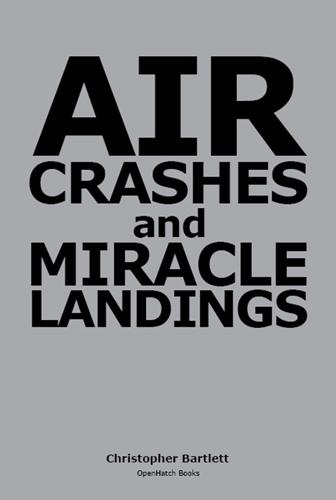
Air Crashes and Miracle Landings: 60 Narratives
by
Christopher Bartlett
Published 11 Apr 2010
Conclusion Piché’s was a remarkable feat meriting its inclusion in our list of miracle landings in Chapter 16. US AIRWAYS FLIGHT 1549 (Hudson River 2009) Sully the Saint Just as we were saying how difficult it is to ditch an airliner successfully in the sea, there has been the widely publicized case of an Airbus suffering a bird strike on taking off from New York’s La Guardia Airport and ditching in the nearby Hudson River with no fatalities. See photo on back cover of the printed edition. [US Airways Flight 1549] No commercial airline pilot has been quite as sanctified[26] as 58-year-old Captain Chesley B. Sullenberger III (nicknamed Sully) who ditched his Airbus A320 in New York’s Hudson River without a single loss of life, except for some hapless birds.
…
Having overheard the earlier exchange, the pilot of Eagle 4718 called Departure: Eagle 4718, I don’t know, I think he said he was going in the Hudson. On the outside chance that it might be useful, Departure transmitted information about the runway available at Newark, seven miles away from the Cactus 1549’s presumed position—no longer visible on the radar, possibly due to the high buildings. Events in the Air Just before Captain Chesley B. Sullenberger III reported the bird strike and announced his intention to return to La Guardia, the Airbus had been climbing through 3,200 ft under takeoff power with everything quite normal. The flock of birds appeared from almost nowhere. The first officer flying the aircraft at the time saw them first.
…
[25] The NTSB has stressed the need to ensure CVRs and FDRs have the required electrical power in all circumstances—for instance when a Swissair airliner lost electrical power in a fire, the recorders stopped working and investigators had great difficulty in determining subsequent events. [26] Term used by Robert Kolker in the New York Magazine in a long feature entitled My Aircraft to describe the treatment accorded Captain Chesley B. Sullenberger III (nicknamed Sully) following his feat. The piece also goes into interesting detail as to how, in general, the social and financial standing of pilots has changed from that of gods just below astronauts to that of drivers just above bus drivers. [27] Nearer the city center than JFK, and with shorter runways, La Guardia was the logical airport for the two-hour flight to Charlottesville in North Carolina that the Airbus was about to make
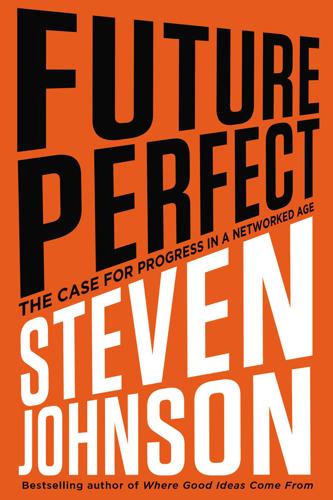
Future Perfect: The Case for Progress in a Networked Age
by
Steven Johnson
Published 14 Jul 2012
The question was, Who or what was responsible for that plane managing to lose two engines during takeoff and still keep its cargo secure? The mass media quickly offered up two primary explanations, both of which turned out to be typical interpretations of good news. First there was the hero narrative: Captain Chesley “Sully” Sullenberger, who had indeed brilliantly navigated his plane into the river with great poise under unthinkable pressure. And then there was the quasi-magical rhetoric that quickly became attached to the event, the Miracle on the Hudson. Those were the two options. That plane floating safely in the Hudson could be explained only by superheroes or miracles. There was no denying Sullenberger’s achievement that day, but the fact is, he was supported by a long history of decisions made by thousands of people over the preceding decades, all of which set up the conditions that made that perfect landing possible.
…
This is how progress happens: some problem or unmet need is identified, imaginative new solutions are proposed, and eventually society decides to implement one (or more) of those solutions. The circulation of ideas and decisions in that cycle is ultimately as important as the physical matter that is transformed in implementing the solutions themselves. Yes, it was crucial to the passengers on US Airways flight 1549 that the plane’s engines had been forged via the staggering physical energy and immense financial expense of a jet engine production cycle. But it was just as important that someone, somewhere, had decided that it would be a good idea to make sure those engines could survive bird impacts.
…
The 311 hive mind is deft not just at detecting reliable patterns but also at providing insights when the normal patterns have been disrupted. Clusters of calls about food-borne illness or sanitary problems from the same restaurant now trigger a rapid response from the city’s health department. And during emergencies, callers help provide real-time insight into what’s really happening. After US Airways flight 1549 crash-landed on the Hudson, a few callers dialed 311 asking what they should do with hand luggage they’d retrieved from the river. The city had extensive plans for its response to an urban plane crash, but dealing with floating luggage was not one of them. Within minutes they had established a procedure for New Yorkers who wanted to turn in debris they’d recovered from the river.

The Eureka Factor
by
John Kounios
Published 14 Apr 2015
Experts don’t need much time because they don’t ordinarily need to compute many possibilities. They immediately know what will work and what won’t. The quick wits of experts can even save lives. On January 15, 2009, US Airways flight 1549 took off from New York’s LaGuardia Airport bound for Charlotte, North Carolina. While ascending, the plane struck a flock of birds. Captain Chesley (“Sully”) Sullenberger smelled burning—birds had been sucked into the engines. Then the engines went dead. Within thirty seconds, Captain Sullenberger concluded that the engines couldn’t be restarted. The plane’s altitude was three thousand feet and decreasing rapidly.
…
Gobet, “Expert and ‘Novice’ Problem Solving Strategies in Chess: Sixty Years of Citing de Groot (1946),” Thinking and Reasoning 14 (2008): 395–408. Regarding Bent Larsen’s approach to playing chess, see query.nytimes.com/gst/fullpage.html?res=9403E0DD1638F931A2575AC0A9669D8B63. Quick Think 1 The information about, and quotes from, Captain Chesley Sullenberger are derived from www.airspacemag.com/flight-today/Sullys-Tale.html/; www.cbsnews.com/news/flight-1549-a-routine-takeoff-turns-ugly/; and Wikipedia, s.v. “Chesley Sullenberger,” last modified June 26, 2014, en.wikipedia.org/wiki/Sullenberger. CHAPTER 4: ALL OF A SUDDEN … * * * 1 The idea that creativity does not differ from “ordinary” thought is discussed in R.
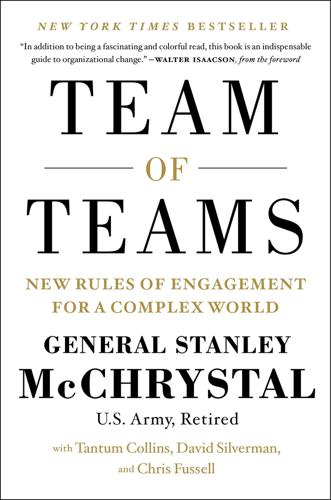
Team of Teams: New Rules of Engagement for a Complex World
by
General Stanley McChrystal
,
Tantum Collins
,
David Silverman
and
Chris Fussell
Published 11 May 2015
The lack of fuel meant there was no fire and the houses the plane struck happened to be empty, but eight passengers, a flight attendant, and the flight engineer were killed; twenty-four people suffered serious injuries. • • • Compare the tragedy of United Flight 173 to the story of US Airways Flight 1549—the plane that Captain Chesley Sullenberger ditched in the Hudson River in 2009. Shortly after the flight took off from LaGuardia Airport, a flock of Canada geese in the midst of their annual migration flew into both engines, causing immediate engine failure. Barely two thousand feet above the ground, the crew had only moments to respond.
…
National Transportation Safety Board, AAR 1978, 8. “Okay, declare a mayday” . . . National Transportation Safety Board, AAR 1978, 9. 1,500 feet . . . National Transportation Safety Board, AAR 1978, 9. above twenty thousand feet . . . National Transportation Safety Board, Aircraft Accident Report: Loss of Thrust in Both Engines, US Airways Flight 1549 Airbus Industrie A320-214, N106US; Weehawken, New Jersey, January 15, 2009, NTSB Number AAR-10-03 (Washington, D.C., 2010), 87. the USS Bainbridge . . . “More Pirates Searching for Lifeboat, Official Says,” CNN, http://www.cnn.com/2009/WORLD/africa/04/10/somalia.u.s.ship (accessed July 8, 2014).
…
P., 44 Taylor, Alex, 191 Taylor, Frederick Winslow, 6, 36–48, 52–53, 54, 59, 82, 99, 171, 208, 211, 232 industrial creativity of, 36–48, 68–69, 71, 189, 197, 224, 249–50 steel works operated by, 36–37, 39–42, 49, 80, 107 team of teams, 128–30, 129, 188 definition of, 20 establishment of, viii, ix, 20, 131, 132 networking of, 236 teams, 121–28 adaptability of, viii–ix, 97, 102, 114, 125, 132 assault, 184–88 command of, 125–26, 129 competitive advantage of, 105 connectivity of, 123, 175–77 creation and maintenance of, vii, 96–98, 105, 126, 196 “design build” (DBTs), 194 distinction between commands and, 91, 96–97, 97, 114 engagement within, 196–97 failure of, 6 intelligence, 121–22 interaction in, 83, 114, 175–77, 180, 182–83, 195, 196 medical, 100–102, 111–12, 123–25 small, 18, 114, 123, 126–28, 169, 188, 196–98 sports, 2, 85–86, 119–20, 126, 142 trust and common purpose in, 6, 96–98, 100, 103, 114, 118, 125, 128, 177, 178, 180, 182–83, 188, 197, 198 teamwork, ix, 93, 106, 127, 226 technology, vii, 32, 36–42, 54, 61, 112, 150, 208, 213 changes in, 19, 74, 107, 140, 222, 249 information (IT), 14, 17, 18, 26, 28, 50, 196–97, 246, 248 telegraph, 208n, 222 tennis, 44–45 Texas, University of (UT), 246–47, 249 “Theory of Complex Phenomena, The” (Hayek), 67 Thomas, Kenneth W., 211 Tikrit, 75, 169 Tocqueville, Alexis de, 7, 233, 243–44 Trafalgar, Battle of, 28–31, 199, 215, 216–17 trust, 7, 126–28, 174, 230, 242, 245 breakdown of, 126–27 in teams, 6, 96–98, 100, 103, 114, 118, 125, 128, 177–78, 180, 182–83, 188, 197, 198 Tunisia, 53–54, 72–73 Twelpforce system, 213 United Airlines Flight 173, 6, 87–91, 105–8, 109n, 111, 113, 121–22, 143, 191, 193 United Airlines Flight 232, 109–10 United Kingdom, 4, 60, 150, 238 United Nations, 22, 23 United States, 22, 48, 84, 106 democracy in, 243–44 in space race, 106, 145, 151 unpredictability, 54, 56, 62, 70, 74, 105, 118, 212, 249 Urry, John, 67 Urwick, Lyndall, 45 US Airways Flight 1549, 90–92, 111, 113 vehicle-borne improvised explosive devices (VBIEDs), 135, 235 Velthouse, Betty A., 211 Victory, HMS, 29–30, 216 Vieira de Mello, Sérgio, 22 Vietnam War, 93, 112, 224 Villeneuve, Pierre-Charles, 30, 31, 217 von Braun, Wernher, 147–48, 166 Wade, Dwyane, 85 Walker, Brian, 76, 79 war, 34, 46 collateral damage of, 14, 16–17 speed in, 61–62 Washington, D.C., 156–57, 165, 169, 203, 227, 243, 248 Washington, George, 35 Waterloo, Battle of, 221 Wealth of Nations (Smith), 139 weather, 55, 56, 58–59, 66, 72 Weaver, Warren, 64–65, 68, 250 Webster, Daniel, 204 Welch, Jack, 174 Wellington, Duke of, 221 West Point, 3, 34, 216, 224, 225 Wikileaks, 140, 169–71 World War I, 44, 51–52 World War II, 28, 44, 51–52, 113n, 157, 217 Yale University, 4, 26–27 Zarqa, 21, 24, 235 Zarqawi, Abu Musab al-, 2, 7, 8, 21–24, 27–28, 49, 84, 222 death of, 241–42, 243 Task Force hunt for, 7, 130–31, 235–42 Zolli, Andrew, 79, 80 Zuckerberg, Mark, 27 *Desert One was the name given to the remote airstrip used by U.S. forces during the failed 1980 attempt to rescue Americans held hostage in Tehran.

Black Box Thinking: Why Most People Never Learn From Their Mistakes--But Some Do
by
Matthew Syed
Published 3 Nov 2015
One hopes that this remarkable and gentle man also took comfort from the fact that his analytical insights played a crucial role in defeating the evil ideology that murdered his loved ones. He was a black box thinker par excellence. Chapter 3 The Paradox of Success I At 3:25 p.m. on January 15, 2009, US Airways Flight 1549 was given clearance to take off from runway 4 of New York’s LaGuardia Airport. It was a clear afternoon and up in the cockpit Captain Chesley Sullenberger and First Officer Jeffrey Skiles ran through the checklists. They were looking forward to the trip. What neither of them realized is that they were about to embark on one of the most celebrated commercial flights of modern times.1 Less than two minutes after takeoff, a flock of Canada geese suddenly loomed into view to the right of the plane.
…
Leigh, 268 Thomson, Donald, 115 3M, 144 Time, 39, 53 time, perception of, 28–29, 30, 59 Tour de France, 171–73 Toyota Production System (TPS), 48–49, 51, 290 Toy Story (film), 207 Toy Story 2 (film), 207, 208–9 training, 30–31, 47–48 trial by jury, 118, 119 Tyson, Neil deGrasse, 111–12, 113, 114, 117 Uncontrolled (Manzi), 187 Unilever, 125–26, 128, 137, 147 unindicted co-ejaculator theory, 81 United Airlines, 21–25 United Airlines 173, 20, 27–31, 39, 40, 84 United Kingdom criminal justice system reforms and, 117 health care and, 10, 18, 54–55 math proficiency in, 271 United States of America DNA testing and, 84 economics and, 94–97, 98 entrepreneurship culture and, 270–71 health care and, 9–10, 17, 32, 49–54, 55–56, 106 math proficiency in, 271 US Airways Flight 1549, 38, 39–40 U.S. Army, 19, 261–63 Vanier, Andre, 138–40 variation, 286 Vesalius, Andreas, 279 Veterans Affairs Medical Center, 16 Virginia Mason Health System, 48, 49–52, 53, 290 Vowles, James, 180–81, 182, 183, 184 Vries, Hugo de, 201 Wald, Abraham, 33–37 Wald, Martin, 33, 34 Wallace, Alfred Russel, 201 Wall Street Journal, 95 war, 278 Ward, Maria, 236 Watt, James, 132 weapons of mass destruction (WMD), 73–74, 74, 91–92, 93, 94 West Point, 261–63 When Prophecy Fails (Festiger), 71n, 72 White Man’s Burden, The (Easterly), 174 Why Smart Executives Fail: And What You Can Learn from Their Mistakes (Finkelstein), 100 Wiggins, Bradley, 172 Wilkinson, Stephan, 242, 245, 248–49 Will and Vision (Tellis and Golder), 205 Wilson, Kevin, 35 Wimbledon High School, 267–68, 269 wind-up radio, 195 Wolff, Toto, 182 World Health Organization, 11 World War II, 33–37 Wright brothers, 199 wrongful convictions, 63–71, 77–85, 114–17 Borchard’s compilation of, 67 Bromgard case, 77–79, 116 cognitive dissonance and, 79–83 DNA evidence and, 68–71, 77, 79–83, 84, 120 drive-bys and, 114 exonerations through DNA testing, 69–70 eyewitness identification and, 114–15 false confessions and, 116 finality doctrines and, 84 hair analysis and, 116 justice system’s initial refusal to learn from, 67–68 as learning opportunity, 65 lineups and, 115–16 memory and, 114 prosecutorial responses to exonerating DNA evidence, 78–83 reform and, 115–17 Rivera case, 63–65, 70–71, 82–83, 116, 119–21 Supreme Court policy of reviewing cases involving procedural errors only, 84–8 Xenophanes, 278 Zappos, 143 *All names of medical staff have been changed to protect anonymity.

Exit Strategy
by
Sherry Walling, Rob Walling
Published 22 Nov 2024
What Is the State of Your Finances? What Brings You Meaning? Afterword In Closing Acknowledgments Resources Other Works by the Authors Foreword by John Warrillow I often compare selling a business to the remarkable landing of US Airways Flight 1549 on the Hudson River. On January 15, 2009, Captain Chesley “Sully” Sullenberger faced an unprecedented challenge when both engines of his Airbus A320 failed just minutes after takeoff. Struck by a flock of geese, the plane lost all thrust, and Sully found himself in a dire situation over one of the most densely populated areas in the world.
…
He quickly realized that returning to LaGuardia or Teterboro airports wasn’t an option. Instead, he made the bold decision to attempt an emergency landing on the Hudson River, a feat that had never been successfully accomplished with such a large commercial aircraft. With no power and just seconds to prepare, Sully executed what is now known as the “Miracle on the Hudson.” He managed to glide the plane onto the water with precision, saving every soul on board. It was an extraordinary moment of skill and calm under pressure. But perhaps what stands out most is that Sully had just one shot to get it right. I think of selling a business in much the same way.
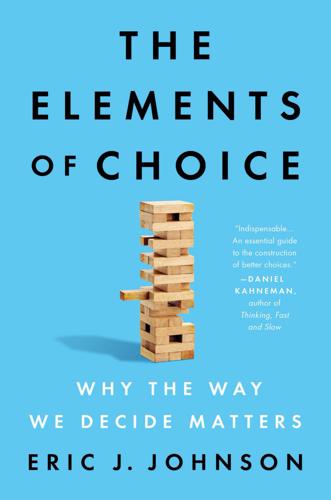
The Elements of Choice: Why the Way We Decide Matters
by
Eric J. Johnson
Published 12 Oct 2021
Choice architecture is all around us, influencing even the pilots whom we rely on to deliver us safely to our destinations. They are trained to make choices and, as the chair of one flight-training program put it, “We’re not building pilots. . . . I like to tell our students we’re training them to be decision-makers who happen to know how to fly an airplane.”1 Captain Chesley “Sully” Sullenberger’s decision about where to land the plane was made simply and quickly. There were only 208 seconds, just over three minutes, between the time the blades of both engines were stopped by striking a flock of errant Canada geese and the moment the plane touched down. Sully reported that he did not have time to do a careful analysis of his three options: going back to LaGuardia, an airfield whose runways are infamously short, especially for an emergency landing; flying over a densely populated area across the river to the smaller general aviation airfield at Teterboro; or splashing down in the Hudson.
…
Aspiring Pilots Are Ready.” 2. Wodtke, “Sully Speaks Out.” 3. See Croft, “Connectivity, Human Factors Drive Next-Gen Cockpit.” 4. Adapted from figure 3 in National Transportation Safety Board, “Loss of Thrust in Both Engines after Encountering a Flock of Birds and Subsequent Ditching on the Hudson River, US Airways Flight 1549 Airbus A320–214, N106US Weehawken, New Jersey, January 15, 2009.” 5. See Langewiesche, “Anatomy of a Miracle”; National Transportation Safety Board, “Loss of Thrust in Both Engines after Encountering a Flock of Birds.” The figure and statistics about performance and transcripts come from the NTSB report. 6.
…
“High School Choice in New York City: A Report on the School Choices and Placements of Low-Achieving Students.” Research Alliance for New York City Schools, April 25, 2013. National Transportation Safety Board. “Loss of Thrust in Both Engines After Encountering a Flock of Birds and Subsequent Ditching on the Hudson River, US Airways Flight 1549 Airbus A320–214, N106US Weehawken, New Jersey, January 15, 2009” (2010): 1–213. Netflix. “Netflix Quick Guide: How Does Netflix Decide What’s on Netflix.” YouTube, June 6, 2013. https://www.youtube.com/watch?v=VvpoUh9gx58. Nguyen, Thanh Cong, Jackie Robinson, Shinji Kaneko, and Nguyen The Chinh.
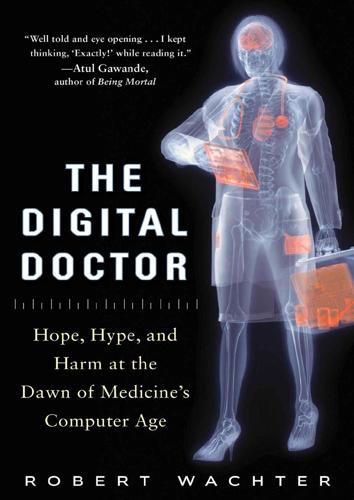
The Digital Doctor: Hope, Hype, and Harm at the Dawn of Medicine’s Computer Age
by
Robert Wachter
Published 7 Apr 2015
He shows us that it’s not just the technology but how we manage it that will determine whether the computerization of medicine will be for good or for ill. And he reminds us that the promise of technology in healthcare will be realized only if it augments, but does not replace, the human touch.” —Captain Chesley “Sully” Sullenberger speaker; consultant; author of Highest Duty and Making a Difference; pilot of US Airways 1549, the “Miracle on the Hudson” “With vivid stories and sharp analysis, Wachter exposes the good, the bad, and the ugly of electronic health records and all things electronic in the complex settings of hospitals, physician offices, and pharmacies. Everyone will learn from Wachter’s intelligent assessment and become a believer that, despite today’s glitches and frustrations, the future computer age will make medicine much better for us all.”
…
She thought for a moment and then said, “If the alarms went silent. That would be scary.” Medicine, of course, is not the only industry in which professionals need to perform their tasks in a swirling, often confusing, high-stakes environment, nor the only one that has to grapple with the matter of computerized alerts. I spoke to Captain Chesley “Sully” Sullenberger, the famed “Miracle on the Hudson” pilot, about how aviation handles the matter of alerts. “The warnings in cockpits now are prioritized so you don’t get alarm fatigue,” he told me. “We work very hard to avoid false positives because false positives are one of the worst things you could do to any warning system.
…
Mitchell, et al., “Mortality and Morbidity in Patients Receiving Encainide, Flecainide, or Placebo: The Cardiac Arrhythmia Suppression Trial,” New England Journal of Medicine 324:781–788 (1991). 146 “Based on what I can extract from the data” Interview of Shahram Ebadollahi by the author, August 18, 2014. 146 “Missing a real event is much more costly” Quoted in L. Kowalczyk, “Patient Alarms Often Unheard.” 147 I spoke to Captain Chesley “Sully” Sullenberger Interview of Sullenberger by the author, May 12, 2014. 147 So I spent a day in Seattle with several of the Boeing engineers Interviews of Bob Myers, Alan Jacobsen, and Mark Nikolic by the author, June 4, 2014. 150 and a 2010 Australian study confirmed that it is J. I. Westbrook, A.

Prediction Machines: The Simple Economics of Artificial Intelligence
by
Ajay Agrawal
,
Joshua Gans
and
Avi Goldfarb
Published 16 Apr 2018
While it does not take a tremendous amount of training to begin a job as a crew member at McDonald’s, new employees are slower and make more mistakes than their more experienced peers. They improve as they serve more customers. Commercial airline pilots also continue to improve from on-the-job experience. On January 15, 2009, when US Airways Flight 1549 was struck by a flock of Canada geese, shutting down all engine power, Captain Chesley “Sully” Sullenberger miraculously landed the plane on the Hudson River, saving the lives of all 155 passengers. Most reporters attributed his performance to experience. He had recorded 19,663 total flight hours, including 4,765 flying an Airbus A320. Sully himself reflected: “One way of looking at this might be that for 42 years, I’ve been making small, regular deposits in this bank of experience, education, and training.

The Glass Cage: Automation and Us
by
Nicholas Carr
Published 28 Sep 2014
Sooner or later, even the most advanced technology will break down, misfire, or, in the case of a computerized system, encounter a cluster of circumstances that its designers and programmers never anticipated and that leave its algorithms baffled. In early 2009, just a few weeks before the Continental Connection crash in Buffalo, a US Airways Airbus A320 lost all engine power after hitting a flock of Canada geese on takeoff from LaGuardia Airport in New York. Acting quickly and coolly, Captain Chesley Sullenberger and his first officer, Jeffrey Skiles, managed, in three harrowing minutes, to ditch the crippled jet safely in the Hudson River. All passengers and crew were evacuated. If the pilots hadn’t been there to “babysit” the A320, a craft with state-of-the-art automation, the jet would have crashed and everyone on board would almost certainly have perished.
…
Gillespie, “We Flew the Atlantic ‘No Hands,’ ” Popular Science, December 1947. 9.Anonymous, “Automatic Control,” Flight, October 9, 1947. 10.For a thorough account of NASA’s work, see Lane E. Wallace, Airborne Trailblazer: Two Decades with NASA Langley’s 737 Flying Laboratory (Washington, D.C.: NASA History Office, 1994). 11.William Langewiesche, Fly by Wire: The Geese, the Glide, the “Miracle” on the Hudson (New York: Farrar, Straus & Giroux, 2009), 103. 12.Antoine de Saint-Exupéry, Wind, Sand and Stars (New York: Reynal & Hitchcock, 1939), 20. 13.Don Harris, Human Performance on the Flight Deck (Surrey, U.K.: Ashgate, 2011), 221. 14.“How Does Automation Affect Airline Safety?,” Flight Safety Foundation, July 3, 2012, flightsafety.org/node/4249. 15.Hemant Bhana, “Trust but Verify,” AeroSafety World, June 2010. 16.Quoted in Nick A.
…
Gross and Ellen Yi-Luen Do, “Ambiguous Intentions: A Paper-like Interface for Creative Design,” in Proceedings of the ACM Symposium on User Interface Software and Technology (New York: ACM, 1996), 183–192. 29.Julie Dorsey et al., “The Mental Canvas: A Tool for Conceptual Architectural Design and Analysis,” in Proceedings of the Pacific Conference on Computer Graphics and Applications (2007), 201–210. 30.William Langewiesche, Fly by Wire: The Geese, the Glide, the “Miracle” on the Hudson (New York: Farrar, Straus & Giroux, 2009), 102. 31.Lee, “Human Factors and Ergonomics.” 32.CBS News, “Faulty Data Misled Pilots in ’09 Air France Crash,” July 5, 2012, cbsnews.com/8301-505263_162-57466644/faulty-data-misled-pilots-in-09-air-france-crash/. 33.Langewiesche, Fly by Wire, 109. 34.Federal Aviation Administration, “NextGen Air Traffic Control/Technical Operations Human Factors (Controller Efficiency & Air Ground Integration) Research and Development Plan,” version one, April 2011. 35.Nathaniel Popper, “Bank Gains by Putting Brakes on Traders,” New York Times, June 26, 2013. 36.Thomas P.
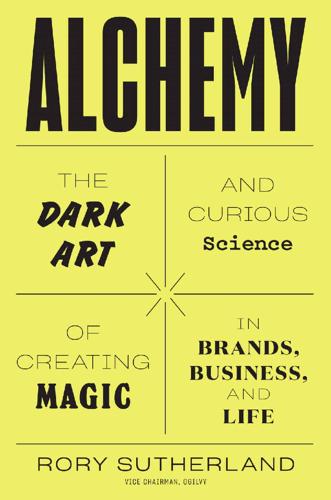
Alchemy: The Dark Art and Curious Science of Creating Magic in Brands, Business, and Life
by
Rory Sutherland
Published 6 May 2019
A fielder would, of course, have no time to perform mathematical calculations, even if a calculator were available, and moreover, even if he had enough time and calculating power, he simply wouldn’t have enough data without knowing the velocity or the angle at which the ball was hit to calculate its trajectory to any level of accuracy. The batsman who hit the ball probably wouldn’t know, either.* 5.4: He’s Not Stupid, He’s Satisficing On 15 January 2009, in an incident now known as the ‘Miracle on the Hudson’, Captain Chesley Sullenberger demonstrated the value of heuristics when, after his aircraft had both its engines disabled by a bird strike, he reacted quickly and safely landed on the Hudson River. It is possible to listen to Sullenberger’s conversations with air traffic control on YouTube: between attempts to restart the engines, he communicates with the departure airport.

QI: The Second Book of General Ignorance
by
Lloyd, John
and
Mitchinson, John
Published 7 Oct 2010
Despite such unnerving obstacles, there have been at least half a dozen successful emergency landings by airliners on water, including one off the coast of Sicily in 2005. The most recent and spectacular example occurred in January 2009 when an Airbus A380, US Airways Flight 1549, ditched in the Hudson River in New York. Shortly after take off, the plane hit a flock of geese and Captain Chesley ‘Sully’ Sullenberger III had to make a forced landing on the water. He did this perfectly, saving the lives of all 155 people on board. Airline statisticians like to say that you are ten times more likely to be hit by a comet than to die in a plane crash.

Against All Enemies
by
Tom Clancy
and
Peter Telep
Published 13 Jun 2011
If they attempted to turn without sufficient power, they’d very quickly lose altitude. Pilots of single-engine aircraft were instructed to never, ever, attempt to return to the runway, because they would lose too much altitude to effect the turnaround. Case in point: On January 15, 2009, Captain Chesley Sullenberger was in command of US Airways Flight 1549 en route from La Guardia to Charlotte. He had lifted off and flown through a flock of birds, resulting in the loss of both engines. He knew he’d lose precious altitude if he started a turnaround with no engines producing power, and determined that his best course of action was to ditch in the river.
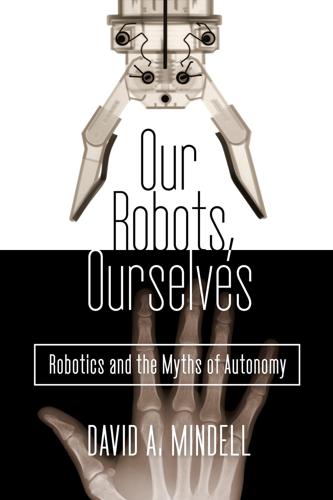
Our Robots, Ourselves: Robotics and the Myths of Autonomy
by
David A. Mindell
Published 12 Oct 2015
De Crespigny marshaled his remaining resources, focused his attention, and the crew landed flight QF32 safely back in Singapore with no injuries. Every time lives are lost due to human error, we can think of other times when they have been saved by human judgment and skill. QF32, and the “miraculous” 2009 US Airways landing on the Hudson River at the hands of Captain Chesley Sullenberger, seem to show that experienced, skilled, calculating humans are critical safety features of these systems on which our lives depend, the last line of defense when the machines fail. Air France 447 and others undermine those hopes. In the summer of 2013, pilots of Asiana Airlines flight 214 failed to successfully land their modern Boeing 777 in San Francisco on a perfectly clear day; the crash landing killed three and injured scores.

Ghost Road: Beyond the Driverless Car
by
Anthony M. Townsend
Published 15 Jun 2020
Finally, the delegation of driving to computers may make operating a vehicle more complex, not less. This has long been the case in aviation. Pilots of today’s aircraft now require much more training. “Technology does not eliminate error, but it changes the nature of errors that are made, and it introduces new kinds of errors,” argues Captain Chesley Sullenberger, the US Airways pilot who safely landed an airliner in the Hudson River in 2009. The further the spread of automation in the cockpit, the thicker the machines’ manuals have become. OUR PRESENT TERMINOLOGY for the journey ahead is deeply problematic. The proof is in the public attitude.

Speed
by
Bob Gilliland
and
Keith Dunnavant
Crossfield died on impact. And the so-called Miracle on the Hudson was still fresh in the minds of all. Just fifteen months before the famous aviators took flight, the U.S. Airways A320 that struck a flock of Canadian geese immediately after takeoff from LaGuardia Airport served as a reminder of all the little things that could go wrong—and, ultimately, offered a powerful object lesson about how one skilled and quick-thinking pilot could avert disaster. By carefully guiding the fast-sinking jetliner onto the Hudson River, Captain Chesley “Sully” Sullenberger saved the lives of 155 passengers and crew.
…
Making the decision to head for the Hudson River, rather than try to return to LaGuardia or plot a course for a New Jersey airport, I knew it was merely the best of several bad options. But thankfully, everything went right, and we saved the lives of all 155 passengers and crew, turning a potential tragedy into a triumph that captured the imagination of the American public. The so-called Miracle on the Hudson profoundly changed us all, and it was humbling to be hailed as a hero. But that moment of working through pit-of-my-stomach anxiety was merely the culmination of many years of preparation. After forty-two years of making small, regular deposits in a bank of experience, education, and training, fortunately, the balance was sufficient for me to make a very large withdrawal.
…
The founder of Solovox Publishing, Dunnavant has also been an award-winning writer and newsroom executive for The National, Adweek, Atlanta, and BusinessWeek and a featured historian on ESPN, CBS, HBO, Showtime, Epix, and SEC Network. About Chesley “Sully” Sullenberger Chesley “Sully” Sullenberger is a retired U.S. Air Force fighter pilot and airline captain who became world famous after the so-called Miracle on the Hudson. He is the coauthor of the New York Times best seller Highest Duty: My Search for What Really Matters. 1. Frank Gilliland Sr. was a hero in World War I but rarely talked about his service. Courtesy of Gilliland family. 2. Headed to church, circa 1932, with his father, mother, and brother, Frank Jr., Bob’s budding interest in aviation could be seen in his aviation cap and goggles.
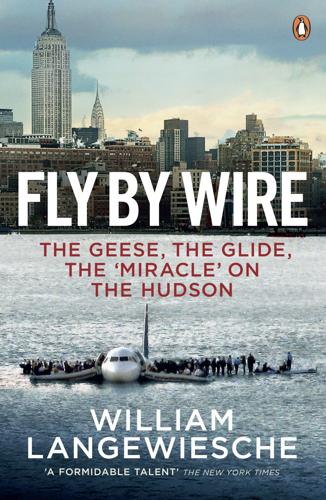
Fly by Wire: The Geese, the Glide, the Miracle on the Hudson
by
William Langewiesche
Published 10 Nov 2009
The Escape New York, January 15, 2009 It was a wintry Thursday afternoon, and the city had turned inward on itself against the cold. On Manhattan’s west side, a few people who happened to be looking toward the Hudson River caught a glimpse of an airline accident that initially brought back memories of another case, eight years earlier, of airplanes crashing into the heart of New York. This time it was US Airways Flight 1549, an Airbus A320 that ran into a flock of geese, lost thrust from both engines, and glided without power to a safe landing in the Hudson’s frigid waters. The Department of Homeland Security flashed its badges, but only as bureaucracies do. There were no foreign terrorists here. The geese were innocent birds.
…
They were expending minimal effort at staying aloft, finessing the vortices swirling from one another’s wings and maneuvering to keep their companions in sight. In theory these are the purposes of goose formations. And nature is marvelous, of course. But about six miles north of LaGuardia, and at about the same time that Wajda switched US Airways Flight 1549 to New York Departure Control, the geese flew into the departure corridor from Runway 4. Immediately after takeoff, Flight 1549 swept past the city’s enormous prison complex on Rikers Island, off to the left. Climbing through 500 feet, Skiles rolled the Airbus into a 20-degree left bank, to begin the required turn from northeast to the north.
…
He has been termed one of the leading writers of The New New Journalism, a group of writers who have secured a place at the centre of contemporary American literature, as Tom Wolfe and The New Journalism did in the sixties. ALSO BY WILLIAM LANGEWIESCHE Cutting for Sign Sahara Unveiled Aloft American Ground The Outlaw Sea The Atomic Bazaar FLY BY WIRE The Geese, The Glide, The ‘Miracle’ on the Hudson WILLIAM LANGEWIESCHE PENGUIN BOOKS PENGUIN BOOKS Published by the Penguin Group Penguin Books Ltd, 80 Strand, London WC2R 0RL, England Penguin Group (USA) Inc., 375 Hudson Street, New York, New York 10014, USA Penguin Group (Canada), 90 Eglinton Avenue East, Suite 700, Toronto, Ontario, Canada M4P 2Y3 (a division of Pearson Penguin Canada Inc.)

Visual Thinking: The Hidden Gifts of People Who Think in Pictures, Patterns, and Abstractions
by
Temple Grandin, Ph.d.
Published 11 Oct 2022
William Langewiesche, in a New York Times Magazine story about the Boeing crash, contends that “these pilots couldn’t decipher a variant of a simple runaway trim . . . leading their passengers over an aerodynamic edge into oblivion.” The problem was Boeing’s flawed software system, which repeatedly and aggressively forced the nose of the plane down. It was a perfect storm: a pilot uninformed about the new computer systems, poorly designed software, and a malfunctioning sensor. Captain Chesley Sullenberger, the pilot who successfully landed a plane on the Hudson River, piloted a full-motion flight simulation that replicated the Boeing MAX malfunction. In a letter to the editor of The New York Times, he called the automated system a death trap. Pilot error is cited in 80 percent of all plane crashes.

Adaptive Markets: Financial Evolution at the Speed of Thought
by
Andrew W. Lo
Published 3 Apr 2017
This communication function is also a very effective antidote to chapter 10’s tyranny of complexity and elitism. Despite the extraordinary complexity of determining the causes of a plane crash, the NTSB manages to communicate a definitive narrative that satisfies all stakeholders, not just those with specialized knowledge. A case in point is the water landing of USAir Flight 1549, piloted by Captain Chesley Sullenberger, in the Hudson River on January 15, 2009. Given the history of terrorist acts in New York over the years, you can imagine how New Yorkers might have reacted to an airplane crash landing within walking (or swimming) distance of the financial district. But that very afternoon, the NTSB issued a statement that, pending more detailed investigation, the initial best guess as to what happened was a bird strike that shut down both engines of Flight 1549.

Decisive: How to Make Better Choices in Life and Work
by
Chip Heath
and
Dan Heath
Published 26 Mar 2013
The background details of the story are told in a Harvard Business School case study by Adam Brandenburger and Vijay Krishna (1995), “Minnetonka Corporation: From Softsoap to Eternity” (HBS case 9-795-163). 8 An emergency landing. Readers in the United States will remember the remarkable story of US Airways Flight 1549, which experienced this event in 2009. See http://en.wikipedia.org/wiki/US_Airways_Flight_1549. 9 Safety factor. The safety factors given here come from Wayne Hale, “Factors of Safety,” Wayne Hale’s Blog, http://blogs.nasa.gov/cm/blog/waynehalesblog/posts/post_1229459081779.html. 10 Schedule buffers at Microsoft. See Michael A.
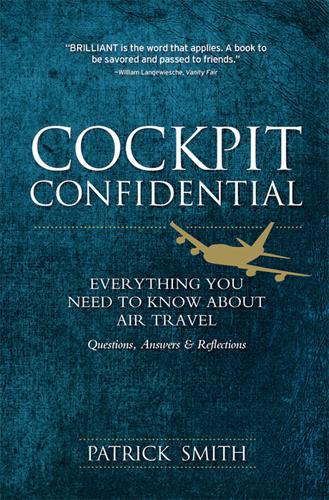
Cockpit Confidential: Everything You Need to Know About Air Travel: Questions, Answers, and Reflections
by
Patrick Smith
Published 6 May 2013
You can see web videos of bird carcasses being fired from a sort of chicken-cannon to test the resistance of windshields, intakes, and so forth. I’ve personally experienced several strikes, and the result was, at worst, a minor dent or crease. I should hardly have to mention, however, that strikes are occasionally dangerous. This is especially true when engines are involved, as we saw in 2009 when US Airways flight 1549 glided into the Hudson River after colliding with a flock of Canada geese. Modern turbofans are resilient, but they don’t take kindly to the ingestion of foreign objects, particularly those slamming into their rotating blades at high speeds. Birds don’t clog an engine but can bend or fracture the internal blades, causing power loss.
…
A particular angle of bank might seem capriciously steep, or a landing might be clumsy, but any number of factors could be at fault. The severity of a maneuver, whether perceived or actual, is not always a crewmember’s whim or lack of finesse. What are your thoughts on the alleged heroics of Captain “Sully” Sullenberger and the so-called Miracle on the Hudson? Chesley “Sully” Sullenberger was the US Airways captain who guided his suddenly engineless Airbus into the Hudson River on January 15, 2009, after striking a flock of Canada geese. Together with the majority of my colleagues, I have the utmost respect for Captain Sullenberger. But that’s just it: respect.
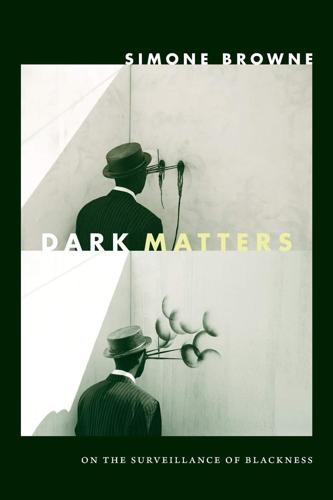
Dark Matters: On the Surveillance of Blackness
by
Simone Browne
Published 1 Oct 2015
Baggage Allowance is a play on travel and security theater, that through its depiction of attachment, possessions, and grief—such as a steam trunk that weeps—offers a window on the traveler’s journey, including recorded interviews of what one packs and what is left behind. The live performance closes with “Heavy,” during which an image of rough waters is projected on a large screen, and Pamela Z recounts the emergency landing of US Airways Flight 1549 on the Hudson River in January 2009. Flight 1549 experienced engine failure soon after takeoff due to its striking a flock of Canada geese. The landing in the Hudson River was successful and all 155 passengers and flight crew survived, in part because, as Pamela Z reminds her audience, the passengers followed the flight crew’s directive to leave behind any baggage and personal belongings.
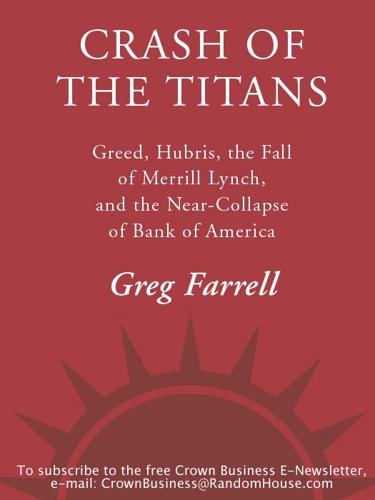
Crash of the Titans: Greed, Hubris, the Fall of Merrill Lynch, and the Near-Collapse of Bank of America
by
Greg Farrell
Published 2 Nov 2010
The bank announced that it would move its earnings announcement up from inauguration day, January 20, to the next day, Friday, January 16. That evening, Ken Lewis held a conference call with his board of directors. The meeting was surreal. A few hours earlier, a Charlotte-bound U.S. Airways flight experienced engine trouble after taking off from LaGuardia Airport in New York. The captain, Chesley “Sully” Sullenberger, made a split-second decision to ditch the airplane, an Airbus A320, in the Hudson River rather than take a chance on being able to get back to an airport. More than a dozen BofA employees were on the flight, heading back to Charlotte after a four-day workweek in New York. Miraculously, the plane landed intact on the Hudson and stayed afloat for hours, allowing rescue teams to get everyone out alive.

Bank 3.0: Why Banking Is No Longer Somewhere You Go but Something You Do
by
Brett King
Published 26 Dec 2012
By 2007, when Apple released the iPhone, Facebook was already outperforming MySpace in terms of monthly visitors. One year later, Facebook had 200 million users, twice the size of MySpace. In 2008 Facebook tried to buy the rapidly growing social network and microblogging service, Twitter, for $500 million.5 In the same year, Tumblr launched. On 15 January 2009, US Airways Flight 1549, flying from LaGuardia Airport in New York to Charlotte, North Carolina, crashed in the Hudson River six minutes after take-off. Both engines of the Airbus A320 were disabled due to birdstrike by a flock of Canadian geese during its climb out. At 3:31pm, the plane made an unpowered ditch landing in the Hudson River.
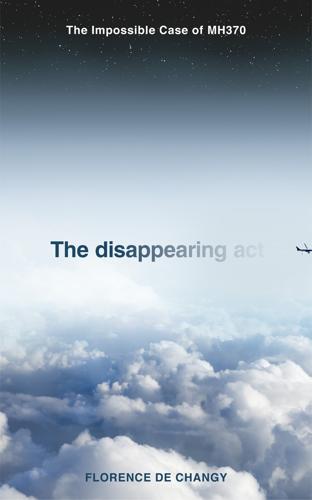
The Disappearing Act
by
Florence de Changy
Published 24 Dec 2020
An air accident is usually caused by one or the other, sometimes a mix of both. Crashes can also be caused by external factors: a missile in the case of MH17, a titanium alloy strip that had fallen from another plane onto the runway in the case of the AF4590 Concorde, a flock of Canada geese getting sucked into the engines in the case of US Airways Flight 1549 – which made an emergency landing in the Hudson River – or a fire in the cargo hold, as in the case of UPS Airlines Flight 6 that crashed in Dubai. It would seem that no two air accidents are alike.1 Out of curiosity and to see how they might be similar or comparable to MH370, I selected a few well-known crashes – hoping to discover some insights that would help me to better understand or imagine what could have happened to the flight that is the subject of my investigation.

WTF?: What's the Future and Why It's Up to Us
by
Tim O'Reilly
Published 9 Oct 2017
When photos were added to Twitter (again by an outside developer providing features that the platform developer itself hadn’t imagined), Twitter’s power to reveal the real-time pulse of the world increased even further. On January 15, 2009, four minutes after Captain “Sully” Sullenberger ditched US Airways Flight 1549 in the Hudson after multiple bird strikes had disabled the engines, Jim Hanrahan posted the first tweet. Janis Krums snapped an iPhone photo of passengers standing on the wing of the downed plane a few minutes later and shared it on Twitter via a third-party app called TwitPic, and it went worldwide long before the story appeared on the television news.

What in God's Name: A Novel
by
Simon Rich
Published 7 Aug 2012
As the plane plummeted from the sky, he weaved it between two skyscrapers and directed it into the Hudson River. There were dozens of injuries but no fatalities—making it the most “miraculous” crash landing in memory. The event was so spectacular, even the media had to acknowledge heaven’s hand. “Miracle on the Hudson!” raved the tabloids. It was God’s best press in years. As soon as he saw the headlines, he gave Vince a promotion to the executive wing, where he’d been ever since. Vince squinted across the room at Craig. He was disgusted by the Angel’s physical appearance. His coffee-stained khakis clung unflatteringly to his hips and his wrinkled blue Oxford was missing at least one button.
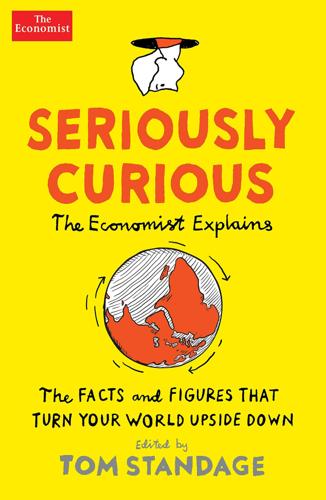
Seriously Curious: The Facts and Figures That Turn Our World Upside Down
by
Tom Standage
Published 27 Nov 2018
It is now charging out of the solar system towards the constellation of Pegasus – at 44km per second. Small uncertainties in the calculation of its trajectory may mean that where exactly it came from and where it is heading will remain a mystery. But of its interstellar origin there is no doubt. Why drones could pose a greater risk to aircraft than birds The “Miracle on the Hudson” – the successful ditching of a US Airways jetliner into New York’s Hudson River in 2009 after it hit a flock of geese – taught frequent flyers two things. First, it really is possible to land an aircraft on water, just as is shown on seat-back safety cards (at least for a small, narrow-body jet).
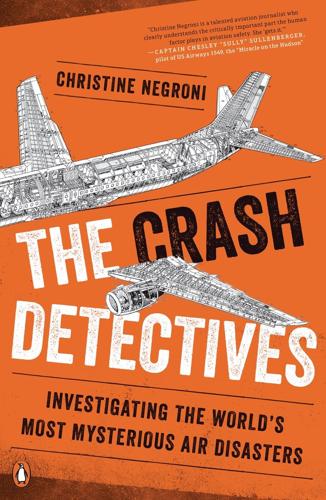
The Crash Detectives: Investigating the World's Most Mysterious Air Disasters
by
Christine Negroni
Published 26 Sep 2016
Vancouver, Canada: Douglas & McIntyre, 1972. Kemp, K. Flight of the Titans: Boeing, Airbus and the Battle for the Future of Air Travel. London: Virgin Books, 2006. Kohli, S. Into Oblivion: Understanding #MH370. CreateSpace, 2014. Langewiesche, W. Fly by Wire: The Geese, The Glide, The Miracle on the Hudson. London: Picador, 2010. Levine, S. The Powerhouse: Inside the Invention of a Battery to Save the World. New York: Viking, 2015. Lindbergh, C. A. Of Flight and Life. New York: Charles Scribner’s Sons, 1948. Long, E. M. and M. K. Long. Amelia Earhart: The Mystery Solved. New York: Simon & Schuster, 1999.
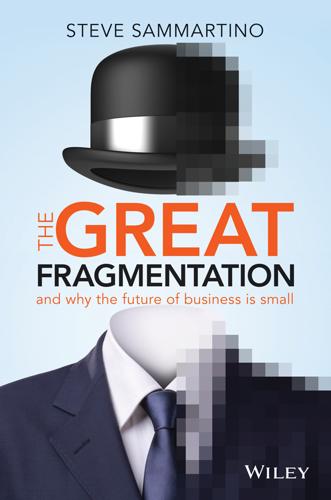
The Great Fragmentation: And Why the Future of All Business Is Small
by
Steve Sammartino
Published 25 Jun 2014
(Remember when Microsoft bought a microshare of Facebook, valuing it at US$15 billion?) They weren’t even the moments of celebrity endorsement resulting from celebrities using the new tools and gathering swarms of followers. It was the instant global awareness brought to events that impacted real people’s lives, such as the Miracle on the Hudson, which was first reported via a tweet by people escaping an airbus sinking in New York’s Hudson River. It was the immediate global reporting of the terrible tsunami in Japan and the initial reports of explosions during the Boston marathon. But most of all, social-media uptake is an industrial-system protest that says we want more than the one-way monologue served up by traditional media during the ‘TV-industrial complex’.1 This couldn’t be better exemplified using social media tools than in what we saw during the Arab Spring.

Hatching Twitter
by
Nick Bilton
Published 5 Nov 2013
Soon, just as in San Francisco, the blue bird appeared. “Hey, have you ever heard of Twitter?” people asked Noah in bars along the Venice boardwalk. “Whoa, why do you have so many followers?” they said in coffee shops on Abbot Kinney Boulevard. Twitter’s prominence in the headlines reached a pinnacle during an event dubbed “Miracle on the Hudson,” when an Airbus A320 with 155 passengers on board took off from New York’s LaGuardia Airport and was struck by a flock of birds. It landed safely in the Hudson River. A picture of the passengers escaping from the downed plane landed on Twitter, taken by a tourist on a ferry who had snapped a photo with his phone.
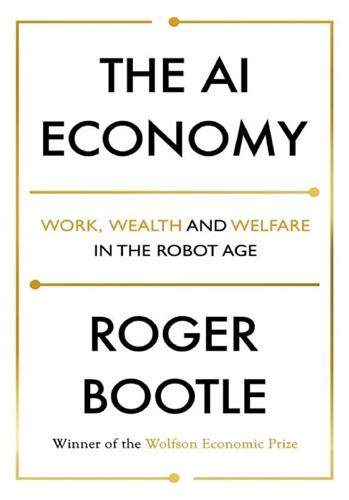
The AI Economy: Work, Wealth and Welfare in the Robot Age
by
Roger Bootle
Published 4 Sep 2019
In order willingly to subject themselves to this, surely the passengers will themselves have to be robots. (Perhaps they will be.) Whatever the accident statistics say, human passengers will always worry about the unforeseen event that a human pilot could and would be able to deal with and a machine could not. Fans of the actor Tom Hanks will surely readily recall the film Sully: Miracle on the Hudson, and nod sagely in agreement. This has a close bearing on the vexed question of how far driverless vehicles are allowed to proceed. For airline pilots, substitute coach driver. Will people really be prepared, en masse, to take long journeys in a coach completely in the hands of AI? And put their children on such a coach?